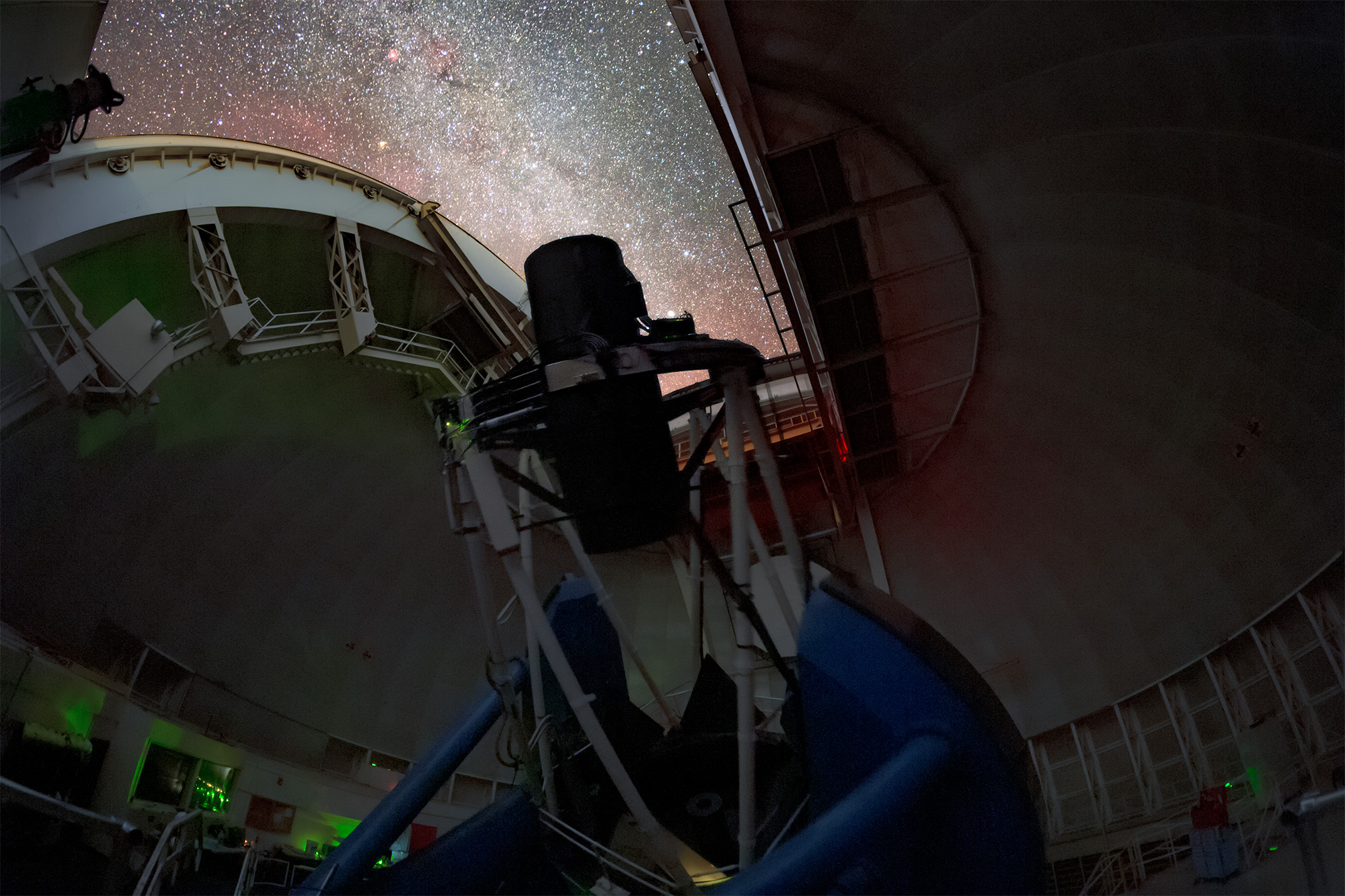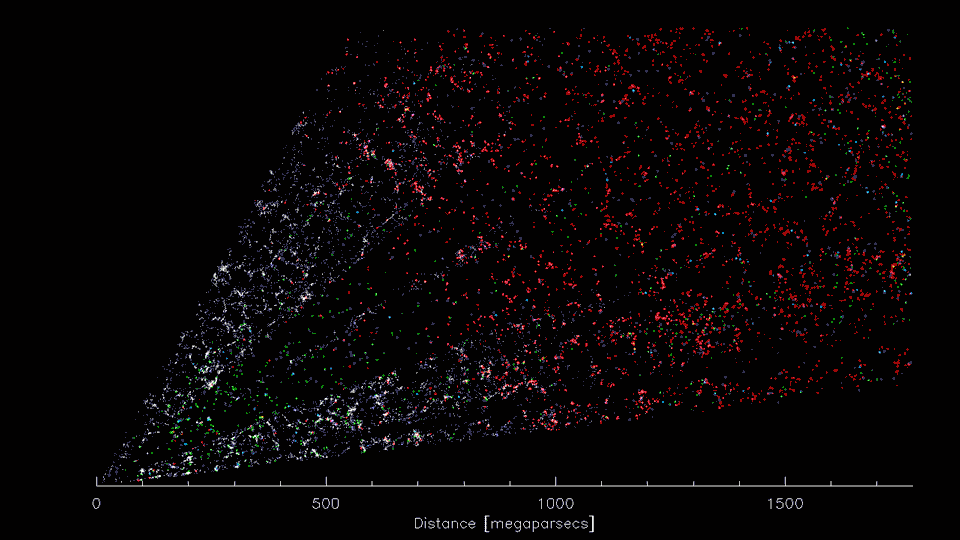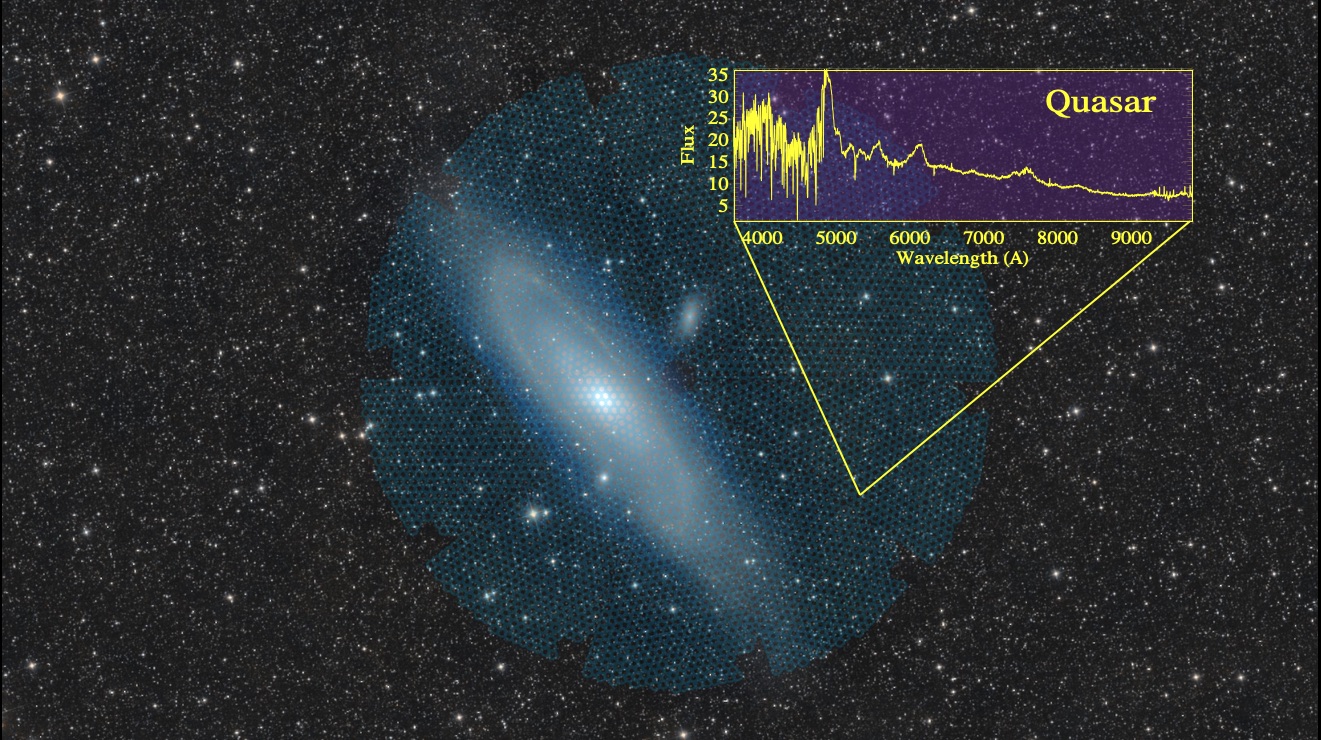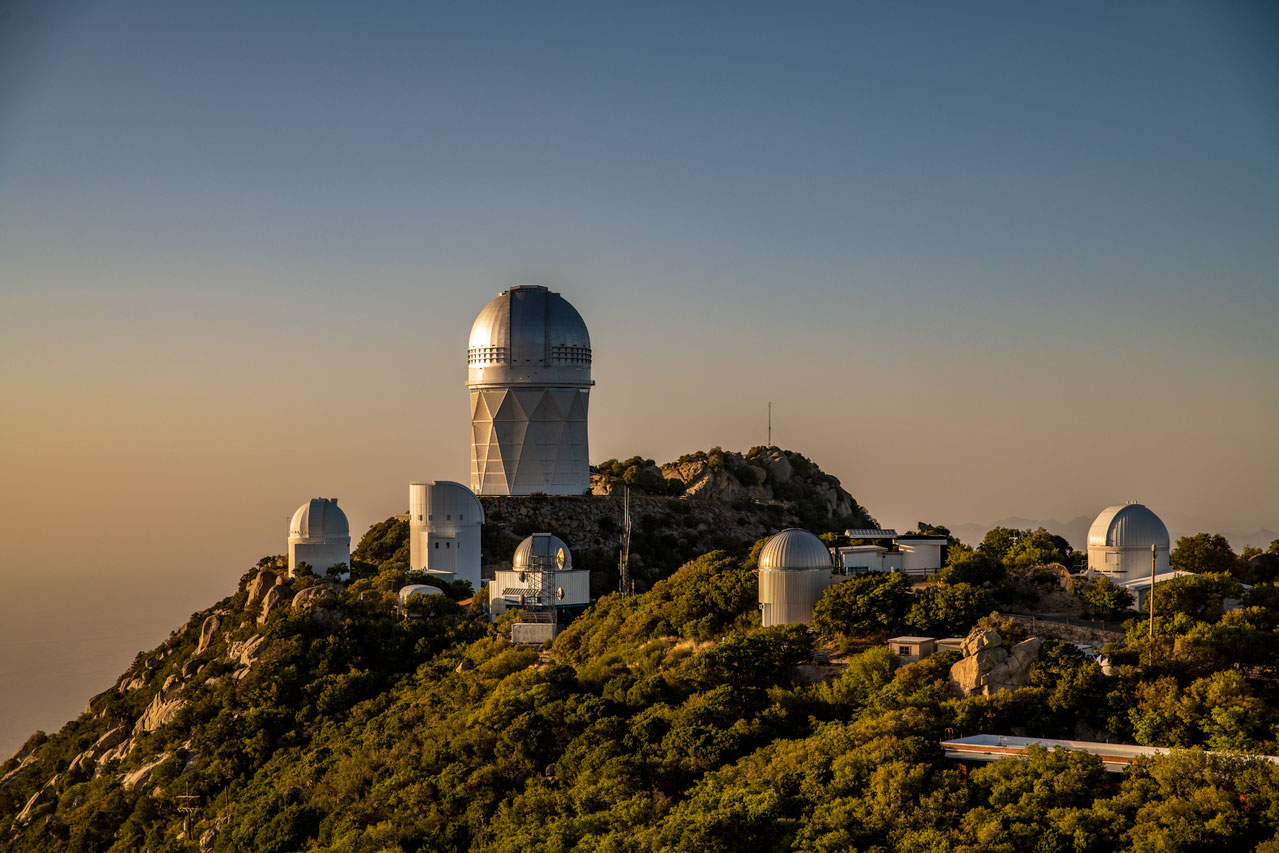This spring, a stunning new documentary film featuring recent discoveries from the Dark Energy Spectroscopic Instrument (DESI) will be released to planetariums worldwide.
5000 Eyes: Mapping the Universe with DESI is a new feature-length planetarium show created in collaboration with DESI‘s consortium of worldwide collaborators, a dedicated group of scientists and engineers who are creating the most complete map of our universe.
DESI is a unique instrument – comprising 5000 robotically positioned fibers that feed an array of ten high-efficiency spectrographs – to measure the effect of dark energy on the expansion of the Universe. By measuring the spectra of many galaxies at once, DESI’s five-year survey is mapping the large-scale structure of the universe over one-third of the sky and 11 billion years of cosmic history. DESI is an international science collaboration managed by the Department of Energy’s Lawrence Berkeley National Laboratory (Berkeley Lab) with primary funding for construction and operations from DOE’s Office of Science.
The 22-minute planetarium film provides a rare glimpse into modern cosmology by introducing viewers to DESI researchers and featuring original footage of the telescope and interviews with DESI scientists from all over the world. The film’s exciting conclusion is a fly-through of DESI’s first year of data. The positions of over 14 million extra-galactic objects are visualized in 3D for the first time, revealing the largest structures in the universe as never seen before.
“The fly-through in the film lets the viewer peer back in time to billions of years ago.”
– Michael Levi
DESI Director, Michael Levi, a senior scientist in Berkeley Lab’s Physics Division, is enthusiastic about this new presentation: “I am very excited to be able to visualize the first year of data just taken by the instrument, now available to be seen in the film by scientists and the public alike. The quality of the three dimensional data is breathtaking in its beauty and ability to reveal the hidden large-scale structures of the Universe. The fly-through in the film lets the viewer peer back in time to billions of years ago.”
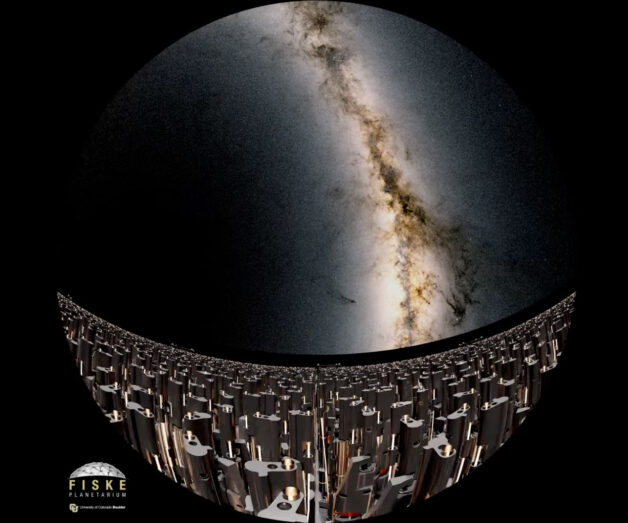
DESI’s robotic “eyes” in a screenshot from the film.
The film’s director, Claire Lamman, who joined DESI as a graduate student from Harvard University, has been working on the film since May 2020. “When you watch videos about observations in astronomy, … you’re often seeing a very neat, distilled version of the actual process. Real data can be messy and there are so many small things to take into account – from the subtle ways that galaxies are oriented, to humidity and wind at the telescope. That’s why we need many different people, with many different specialties, to take on a project like this one.”
According to Levi, “The DESI collaboration funded this production in part to give our early career scientists a means to express and share their excitement in doing world-class research. Their youthful exuberance comes through and I am thrilled for everyone to see it.”
This new feature-length planetarium show, created by the Fiske Planetarium (University of Colorado Boulder), will be distributed for free to planetariums worldwide. There are currently plans to make the film available in 9 languages – English, Spanish, French, Mandarin, Catalan, Korean, Galician, German, and Portuguese – and all script translations are being made by DESI collaborators. The film will premiere at the Fiske on March 2, and at Oakland’s Chabot Space & Science Center on March 8. The film will then be freely available for download and showing to public audiences, and the Fiske Planetarium will also present a “flat” English version of the film, to be made freely accessible online on their Fiske Productions website and on YouTube.
DESI was originally proposed over a decade ago, and construction began in 2015 at the Mayall Telescope at Kitt Peak National Observatory near Tucson, Arizona. The DESI instrument saw first light in late 2019, and the validation phase was delayed at the onset of global coronavirus pandemic, but testing resumed in December 2020 and DESI finally launched in May 2021. During its first seven months, DESI broke all previous records for three-dimensional galaxy surveys, and then after another brief hiatus in late 2021 due to a massive wildfire on Kitt Peak which threatened the observatory, DESI resumed its cataloging of the cosmos.
DESI construction and its operations at the Mayall telescope are supported by the DOE Office of Science and by the National Energy Research Scientific Computing Center (NERSC), a DOE Office of Science user facility. Additional support for DESI is provided by the U.S. National Science Foundation, the Science and Technologies Facilities Council of the United Kingdom, the Gordon and Betty Moore Foundation, the Heising-Simons Foundation, the French Alternative Energies and Atomic Energy Commission (CEA), the National Council of Science and Technology of Mexico, the Ministry of Economy of Spain, and by the DESI member institutions. The DESI collaboration is honored to be permitted to conduct scientific research on Iolkam Du’ag (Kitt Peak), a mountain with particular significance to the Tohono O’odham Nation. View the full list of DESI collaborating institutions, and learn more about DESI here: www.desi.lbl.gov.
# # #
Founded in 1931 on the belief that the biggest scientific challenges are best addressed by teams, Lawrence Berkeley National Laboratory and its scientists have been recognized with 16 Nobel Prizes. Today, Berkeley Lab researchers develop sustainable energy and environmental solutions, create useful new materials, advance the frontiers of computing, and probe the mysteries of life, matter, and the universe. Scientists from around the world rely on the Lab’s facilities for their own discovery science. Berkeley Lab is a multiprogram national laboratory, managed by the University of California for the U.S. Department of Energy’s Office of Science.
DOE’s Office of Science is the single largest supporter of basic research in the physical sciences in the United States, and is working to address some of the most pressing challenges of our time. For more information, please visit energy.gov/science.
